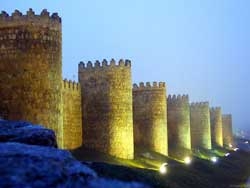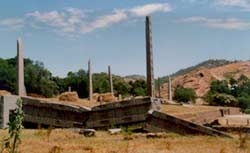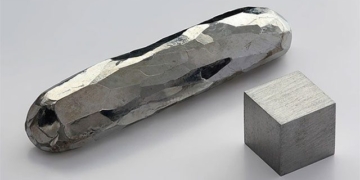A reactor in southern France has successfully created and maintained hot plasma at a temperature of 50 million degrees Celsius for a continuous period of 6 minutes, marking a significant milestone in the pursuit of harnessing nuclear fusion energy.
On May 6, scientists from the Princeton Plasma Physics Laboratory (PPPL) in New Jersey announced that their device generated super-hot matter known as plasma at a temperature of 50 million degrees Celsius for 6 continuous minutes, according to Business Insider. The ultimate goal is to sustain super-hot plasma for hours, but 6 minutes represents a new world record for devices like WEST. Other similar nuclear reactors produce hotter plasma but cannot maintain it for as long.
WEST is a tokamak reactor. This is a large, room-sized fusion reactor measuring 2.4 x 2.4 meters with a height of 2.4 meters, generating energy similar to that of the Sun. This is why scientists refer to these machines as “artificial suns.” “What we are trying to do is create a sun on Earth,” shared Luis Delgado-Aparicio, the senior project director at PPPL. “It’s an extremely challenging task,” but the new record indicates they are on the right path.

Inside the WEST reactor. (Photo: PPPL)
The Sun operates through nuclear fusion (in which atomic nuclei combine and release energy), as opposed to fission (where atomic nuclei split and generate energy) used in current operating nuclear reactors. Fusion energy is more potent than any energy form available today. If humanity can harness fusion reactions, it could produce energy from each kilogram of fuel nearly 4 million times more than fossil fuels and without carbon emissions.
While WEST is not used for generating fusion power for households, this experimental reactor lays the groundwork for future commercial reactors. WEST shares many similarities with ITER, a reactor currently under construction in southern France, which is also the largest tokamak in the world capable of sustaining plasma burning when completed. Creating such a self-heating mixture is a necessary step toward harnessing fusion power for commercial purposes. However, due to cost and technological challenges, it remains unclear when ITER will be completed. Meanwhile, other facilities, including WEST, are conducting experiments to determine the best ways to operate the massive reactor. WEST and ITER are located quite close to each other, and experiments at WEST could be directly applicable to ITER, according to Delgado-Aparicio.
For fusion reactions to occur on Earth, the fuel needs to reach temperatures of at least 50 million degrees Celsius. One of the main obstacles that fusion reactors face is the enormous energy requirement to achieve such extreme temperatures. Until now, reactors have been unable to maintain plasma long enough to achieve a surplus of energy that could be commercially used. Currently, fusion reactors typically consume more energy than they produce. The latest breakthrough from WEST is no exception. However, the facility produced over 15% more energy from fusion than previous attempts, and the plasma was also twice as dense.
WEST is assisting scientists in testing the best materials for constructing fusion reactor walls, as this environment can reach temperatures three times hotter than the core of the Sun. Initially, WEST featured carbon walls. Although carbon is easy to work with, it also absorbs tritium, a rare hydrogen isotope used as fuel for fusion reactions.
In 2012, scientists decided to experiment with a different material for the tokamak wall, namely tungsten. This is also the material that ITER will use for several key components. Due to its heat resistance without absorbing tritium, Delgado-Aparicio considers tungsten to be the ideal material for constructing a tokamak. However, tungsten is not perfect; one of its limitations is that it can melt and contaminate the plasma. To optimize the system, the research team needs to understand precisely how tungsten behaves and interacts with plasma through WEST.
The team of experts at PPPL adjusted a diagnostic tool for use in the latest experiments from WEST. This tool helps them accurately measure plasma temperatures to better understand how tungsten transitions from the device wall to the plasma. PPPL stated they would publish the experimental results in a specialized journal in the coming weeks.





















































